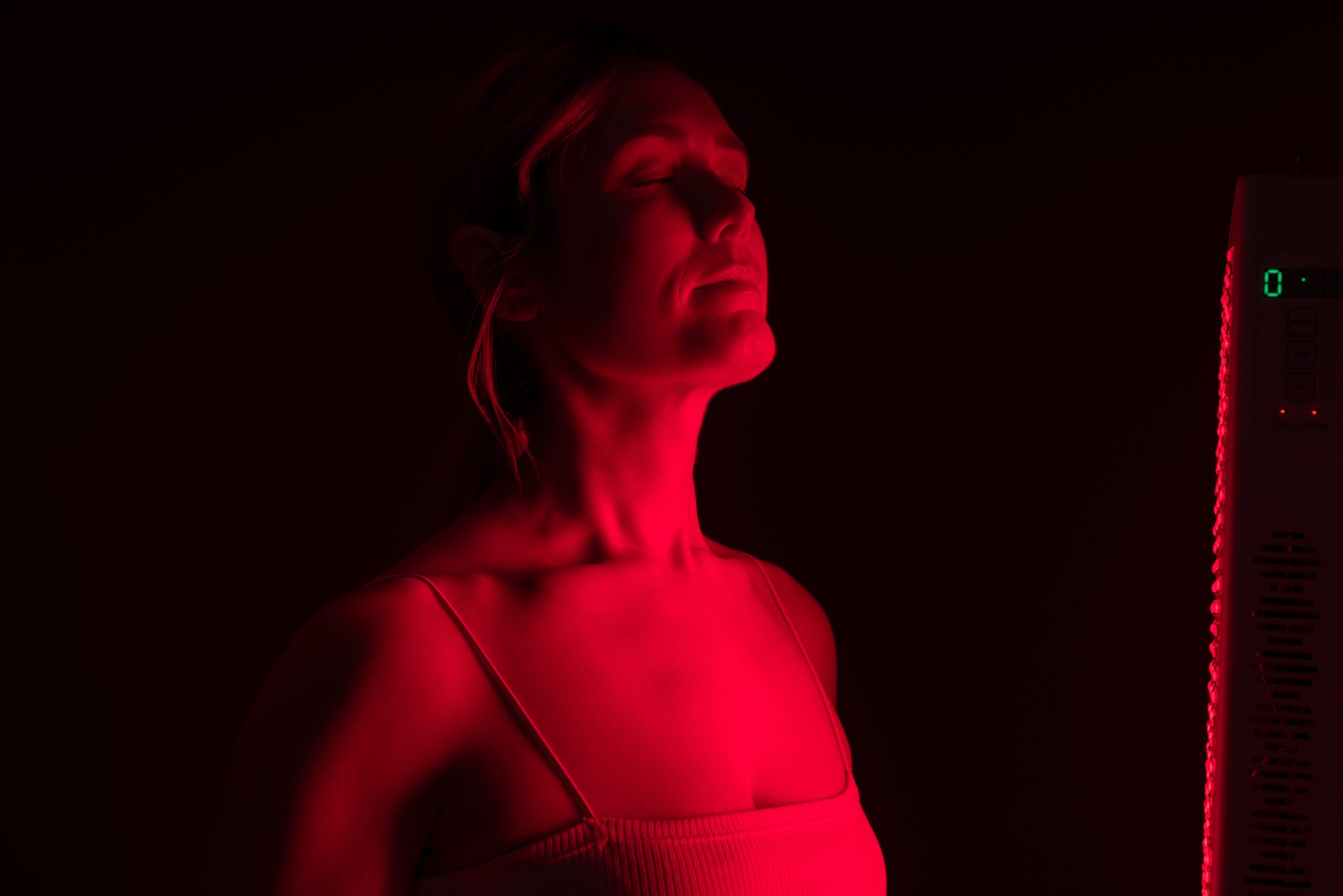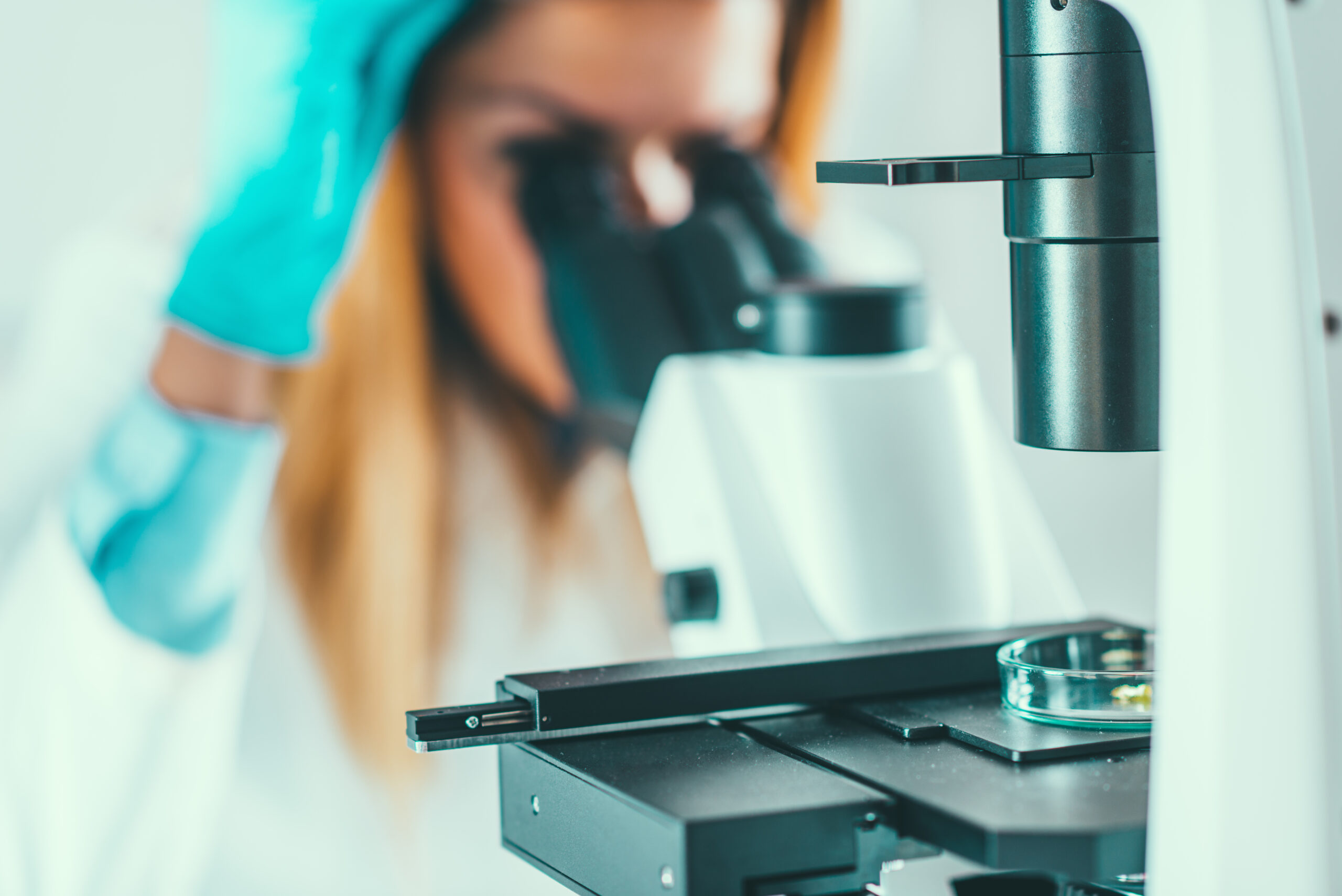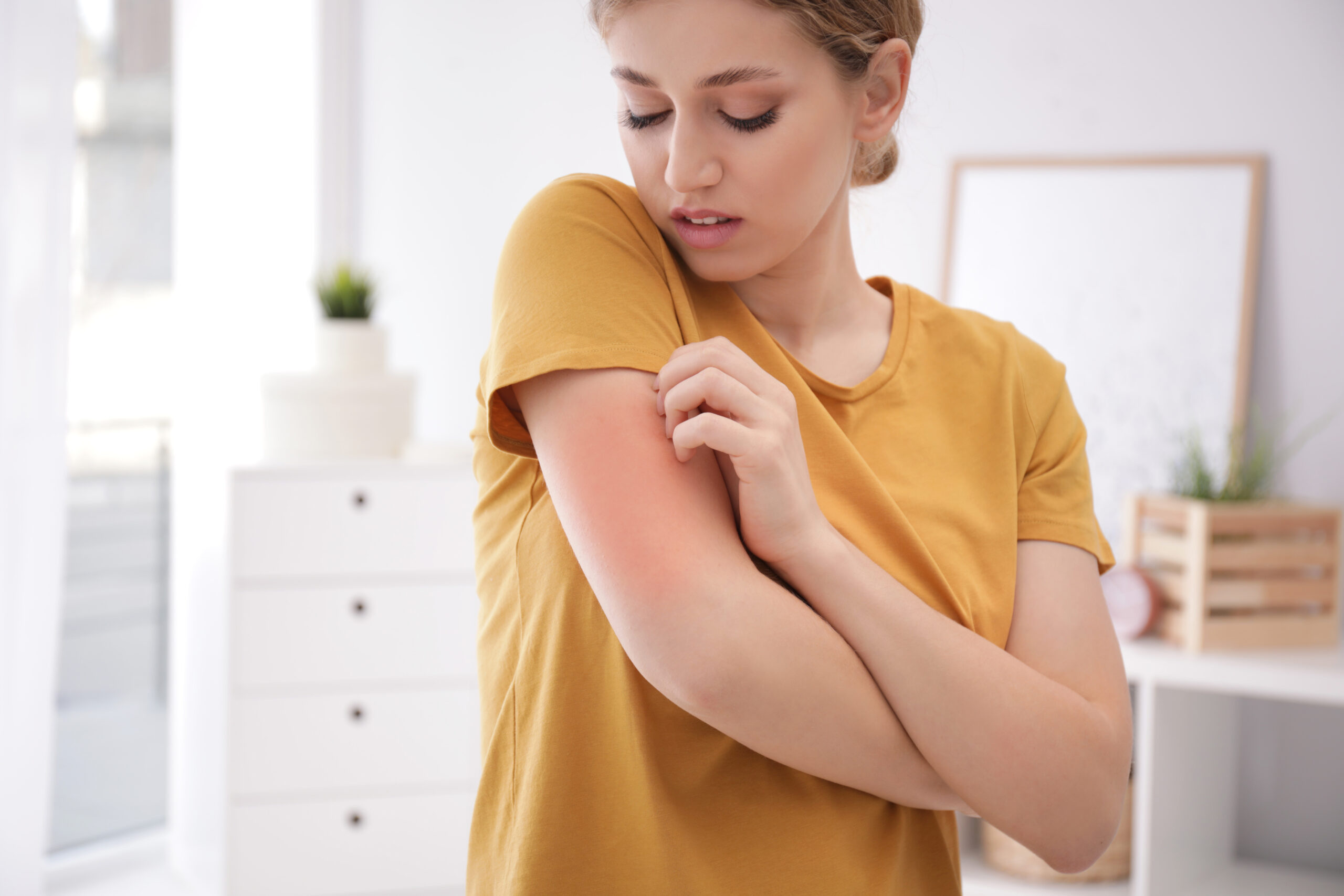Photobiomodulation & Integrative Cancer Care.
If we break apart the word photobiomodulation, we get photo (light), bio (life), and modulation (to change). This effectively encapsulates the essence of photobiomodulation (PBM) as a therapy that uses light to initiate beneficial changes in the biological processes of living organisms.
By applying specific wavelengths and intensities of light, PBM aims to enhance the body’s natural healing and regenerative capacities, influence cellular behavior, and modulate biological responses. In this blog post, you’ll learn how photobiomodulation works, what it benefits, and how I use it in my integrative cancer care practice, plus product recommendations and precautions.
Stimulating cellular energy production through PBM enhances the body’s natural repair processes, leading to faster wound healing and tissue repair.
How Does Photobiomodulation Work:
Photobiomodulation Therapy (PBMT) operates on the principle of using light, typically in the form of low-level lasers or LED devices, to stimulate, heal, regenerate, and protect tissue that has either been injured, is degenerating, or otherwise could use support in functioning optimally.
If the idea of using light to impact our health sounds really out of the box, consider that we humans can synthesize vitamin D from the sun, that our circadian rhythm and hormone cycles adapt to the light we see, and more. Different light frequencies do indeed have the ability to impact our bodies in various ways. The core mechanism that allows PBMT to exert its therapeutic effects is its ability to induce cellular photochemical reactions. Think of photosynthesis in plants, where light energy is converted into chemical energy to foster growth and health. When specific wavelengths of light are applied to human tissue, they are absorbed by mitochondrial chromophores, particularly cytochrome c oxidase, leading to an increase in mitochondrial efficiency and the production of adenosine triphosphate (ATP), the energy currency of the cell. This enhanced cellular energy production subsequently triggers a cascade of biological reactions that contribute to increased cell proliferation, migration, and the synthesis of anti-inflammatory mediators and growth factors. In short, PBMT essentially “charges up” our cells, enabling them to repair and regenerate more efficiently.

What Are The Benefits Of Photobiomodulation?
The benefits of Photobiomodulation (PBM) are comprehensive and diverse, thanks to its foundational influence at the cellular level. Given that our bodies are comprised of cells, PBM’s impact extends across the spectrum of physiological functions, offering many therapeutic advantages.
Pain Management
One of the most celebrated benefits of PBM is its ability to manage and reduce pain. By reducing inflammation and enhancing tissue repair, PBM can alleviate acute and chronic pain, including musculoskeletal pain, neuropathic pain, and arthritis-related pain. It is also beneficial in treating sports injuries, post-surgical recovery, and chronic inflammatory conditions.
Accelerated Tissue Repair and Wound Healing
Stimulating cellular energy production through PBM enhances the body’s natural repair processes, leading to faster wound healing and tissue repair. This makes it a valuable tool for treating skin wounds, burns, and surgical incisions and improving damaged muscle and connective tissue recovery time.
Improved Circulation (Detoxification)
By promoting vasodilation, PBM increases blood flow to the treated areas, crucial for delivering oxygen and nutrients required for tissue repair and removing waste products from the cells.
Neurological Benefits
Photobiomodulation has shown promise in neuroprotection and the recovery of nerve function, making it a potential treatment for neurodegenerative diseases, peripheral nerve injuries, and in the rehabilitation of patients with traumatic brain injuries.
Skin Rejuvenation:
The use of PBM in dermatology has shown positive effects on skin health, including reducing signs of aging, enhancing collagen production for wrinkle reduction, and treating acne and other skin conditions. It promotes healthier, more resilient skin through cellular rejuvenation. It fits well with a larger, non-toxic skin rejuvenation plan that may include platelet-rich plasma and IV therapy.
My Favorite Uses For Photobiomodulation:
In my practice, I have a few favorite ways in which I utilize the power of photobiomodulation:
Nervous System Healing
Disease encompasses not just physical symptoms but also the nervous system. Photobiomodulation offers significant promise in supporting the healing of the nervous system. This ranges from nervous system dysfunction related to stress and trauma to the aftermath of a traumatic brain injury or within the context of neurodegenerative diseases. This therapeutic approach can support the recovery of neurological function by improving cellular energy production, reducing oxidative stress, and promoting the synthesis of neurotrophic factors essential for nerve growth and health. My family is a big fan of using PBM for this application.
Colitis And IBD
In the treatment of colitis and inflammatory bowel disease (IBD), photobiomodulation can be extremely useful because it can modulate the immune response and reduce inflammation while also increasing rates of tissue repair and regeneration in the mucosal lining of the intestines—a double whammy that supports both healing and symptom relief without the use of pharmaceuticals.
Mucositis and Mouth Sores
Perhaps my favorite use for photobiomodulation is treating mucositis and mouth sores, common and excruciating side effects of cancer treatments such as chemotherapy and radiation therapy. By applying specific light wavelengths directly to the affected areas, PBM can reduce the severity and duration of lesions, alleviate pain, and accelerate healing.

What Photobiomodulation Devices Do I Recommend?
It can feel overwhelming to navigate the options available, and not all photobiomodulation devices are equally effective. For my patients, I provide individualized guidance and treatment plans, but generally speaking, these are my favorite photobiomodulation devices:
The Endolight Band:
I recommend this versatile device to everyone! Worn like a “watch,” the delight band allows the therapeutic light to hit the circulating blood via the wrist’s arteries. The endolight is versatile and has multiple settings, each wavelength or color impacting the body differently.
The WEBER Mat:
These mats are ideal for overall health and healing, offering a broad application of light therapy to support bodily functions and recovery processes. They come in small and large sizes and are versatile solutions you’ll find yourself reaching for all kinds of uses.
The PBM Pro
This device was designed for oral use, and I reach for it when I have mucositis or mouth sores. The PBM Pro delivers targeted light therapy to alleviate symptoms and accelerate healing.
The Weber Helmet:
The Weber Helmet is a photobiomodulation device shaped like a helmet that can be utilized for its effect on brain tumors and to aid in healing concussion, dementia, and neurodegenerative diseases.
Can I Utilize Photobiomodulation Therapy During Active Cancer Treatment?
I recommend photobiomodulation for post-cancer healing but only make recommendations during active disease for certain patients. This is something I tailor to each individual patient.
Summary:
Photobiomodulation is an excellent tool for anyone looking to heal at a cellular level and works exceptionally well for mucositis, gut health, and other inflammatory processes. There is also evidence of the benefits of PBM for nervous system healing. With various devices available, such as the Endolight Band, WEBER Mat, PBM Pro, and the Weber Helmet, individuals can access tailored PBM therapies that align with their specific health needs and conditions. If you are currently in active cancer treatment, be sure to consult with a knowledgeable practitioner before starting photobiomodulation therapy.
Have You Ever Wished For A Blueprint For Your Body? Take A Look At Your Epigenetics!
The word Epigenetics may sound science-y and overwhelming, but I promise you, understanding this concept will leave you with a sense of empowerment. Many of my patients share that doing an epigenetic study felt like finding a missing puzzle piece in their understanding of their bodies and their health journey. In this blog post, you’ll learn about what exactly epigenetics are, why they are so exciting, and I’ll provide some examples of common epigenetic hiccups I see in my patients, and how they guide us on their health journey:
Like finding a missing puzzel piece in their understanding of their bodies and their health journey.
What Are Epigenetics?
Let’s jump in with some science, and hang with me here because I promise it’s worth understanding: Epigenetics refers to the study of changes in gene expression that do not involve alterations to the underlying DNA sequence—a layer of regulation that sits “on top of” genetics, hence the prefix “epi-” which means above or over. These epigenetic changes can influence the activity of genes, turning them on or off, increasing or decreasing their normal activity, all without changing the DNA sequence itself. This means that while our genetic code (the DNA sequence) provides the blueprint for our bodies, epigenetics can modify how that blueprint is read and expressed in different cells and under different conditions.
Unlike our DNA sequence, which is largely fixed from the moment of conception, epigenetic changes are dynamic and can be influenced by a variety of factors including our environment, lifestyle, and even our experiences. Factors such as nutrition, stress, physical activity, exposure to toxins, and aging can all lead to epigenetic modifications that can affect our health and how our genes are expressed.

Why Are Epigenetics So Exciting?
If you’re on any kind of healing journey, understanding that your gene expression can be influenced should be a very exciting revelation – because it gives us control back. We can change the way our genes express themselves by controlling things like nutrition, supplementation, lifestyle etcetera. And not just that, but knowing our epigenetics is kind of like having a cheat sheet for our bodies – if we know we have certain epigenetics, we might know that we are more prone to adverse effects from certain medications… This is important information to have!
Epigenetics & The Terrain-Based Approach to Health
Here at Zuza’s Way we practice a terrain-based approach to health, which considers the body’s internal environment or ‘terrain’ as being a key factor in determining our health. This translates to accepting that your dis-ease was probably not just bad luck. This might feel like a gut punch, but hang with me here. If it wasn’t just bad luck, that means that there were reasons for your disease manifesting. And if there are reasons, there are specific things we can target to return your terrain to one that fosters health.
This concept aligns perfectly with epigenetic science, as it emphasizes the importance of nurturing a healthy terrain through lifestyle and environmental choices to promote optimal gene expression. By focusing on creating a balanced and supportive internal environment, we can potentially mitigate the risks of developing various health conditions, including cancer.
Let’s Take A Look At Some Real Life Examples Of Some Epigenetic SNPs I Frequently See In My Patients:
PON1:
The PON1 gene codes for an enzyme that plays a crucial role in breaking down certain toxins, including pesticides like glyphosate. Individuals with variations in the PON1 gene have a reduced ability to detoxify glyphosate, leading to an accumulation of toxins in the body. Research shows that individuals with a PON1 mutation have an 82% higher risk of organophosphate toxicity compared to people without it – and if you are Caucasian – your risk of toxicity jumps up by 148%! This accumulation can contribute to various health issues – including cancer.
However, if you know that you have a mutation in your PON1 gene, you can take action. Quercetin has been shown to increase PON1 function by as much as 200%. Quercetin is not safe with every chemotherapy treatment so make sure you check with me on your 1:1 time before starting this supplement if you are in active treatment.
MTHFR:
The MTHFR gene is critical for a process known as methylation, which is essential for DNA repair, neurotransmitter synthesis, and detoxification. You can probably see why a mutation in this gene would be relevant in a cancer diagnosis. Individuals with certain MTHFR variations also experience higher rates of anxiety, depression, and other mental health issues, as well as trouble trying to conceive.
What I really want to stress here is that knowledge is power, because there are ways in which we can encourage the body to methylate more efficiently, meaning that we can increase our ability to methylate, repair DNA, and detoxify!
However, if we don’t have this information about our epigenetic makeup, we can’t do anything about it… And that would be a real shame!
COMT
The COMT gene is involved in the breakdown of estrogen and other catecholamines. Individuals with certain COMT gene variations may have a slower metabolism of estrogen, leading to an accumulation of harmful estrogen metabolites. This can increase the risk of estrogen dominance, characterized by symptoms such as weight gain, mood swings, and, in more severe cases, hormonal cancers like breast cancer.
Individuals with specific COMT variations should be cautious with hormone replacement therapies, including birth control and bio-identical hormones, as they won’t be able to metabolize them efficiently.
For those with COMT mutations, avoiding xenoestrogens, which are found in many plastics, personal care products, and pesticides, becomes extra crucial for maintaining hormonal balance.
Conclusion:
Remember, that the study of epigenetics is all about gene expression. Understanding this puts the ultimate power back in your hands because what this means is that it’s not just bad luck – there are actual factors that you have the power to influence that determine your health. When you are aware of your unique epigenetic makeup, you can influence the way your genes are expressed through things like reducing your toxin exposure, lifestyle modifications, nutrition, and key supplements. Epigenetics guide our every step with our patients at Zuza’s Way.
The Work Isn’t Done: The Importance Of Detoxing After Remission
In the aftermath of cancer treatment, the focus often shifts to recovery, gut healing, and strengthening the body’s natural defenses. One critical aspect of this phase is detoxification, especially after the heavy toll that treatments like chemotherapy and radiation can take on our body’s detox pathways and total toxic load. Toxin exposure likely played at least a small role in your diagnosis, and we want to resolve this area in order to set the scene for a continued long and healthy life. Understanding how to support detoxification can be a game-changer for anyone in remission, perhaps especially pediatric cancer patients whose bodies are even more susceptible to damage from toxin exposure.
Understanding how to support detoxification can be a game changer for anyone in remission.
The Importance of Detoxification
Detoxification is more than just a buzzword; it’s a vital process that our bodies perform continuously. Our liver, kidneys, lymphatic system, skin, and even our respiratory system work in harmony to eliminate toxins and waste products that accumulate from our metabolism, environment, and yes, cancer treatments – which, while lifesaving, are incredibly toxic.
My favorite metaphor is the fishbowl metaphor. Imagine the patient as a fish in a fish bowl. The water in the fishbowl is getting pretty murky – it contains a lifetime of toxin exposure. Now, the fish gets sick. So the doctors take the fish out of the bowl, and bring it to the hospital, where they do surgery, chemotherapy and more to heal the fish. The fish gets to ring the bell, and then they plop him right back in that same murky water where he continues to live as he did before he got sick. Do you think the fish is going to stay healthy for long?
Supporting the Liver:
The liver is the cornerstone of our body’s detoxification system, processing everything from metabolic waste to external toxins. After treatment, supporting the liver’s function can help alleviate the burden of chemotherapy and other medications. Castor oil packs, known for their anti-inflammatory and liver-supportive properties, can be a super simple and gentle, yet effective way to aid liver detoxification. Similarly, key supplements like glutathione can play a crucial role in neutralizing toxins and facilitating their elimination – especially for patients who have certain epigenetic SNPs that influence their body’s own glutathione production.

Kidney Care:
Our kidneys are vital in filtering waste from our blood and excreting it through our urine. Hydration is key to supporting kidney function, especially post-treatment. Encouraging the intake of clean, filtered water can help flush out toxins and ensure that the kidneys are working efficiently. Certain herbs and foods are also key for kidney health and this is something we provide individualized guidance on
Skin Detox: Sweating It Out
The skin, our largest organ, plays a significant role in detoxification through sweating. Practices like sauna use, particularly infrared saunas, can stimulate sweating and help release stored toxins. Dry brushing and regular physical activity also promote skin detoxification by enhancing circulation and encouraging sweat.
Nutrition Matters!
What we eat significantly impacts our detoxification pathways. Incorporating detox-supportive foods into the diet can bolster the body’s natural detox processes. Beets and greens, rich in antioxidants and nutrients, support liver health and methylation, a critical process in detoxification. Cruciferous vegetables like broccoli and kale activate detoxification enzymes in the liver, while dandelion greens support both liver and kidney health.
Tailoring Detox to Individual Needs
It’s important to remember that detoxification is not a one-size-fits-all process. Individual needs, especially in pediatric cancer patients, can vary widely based on their treatment history, epigenetics, and overall health. Epigenetics can offer insights into specific detox pathways that may need more support, allowing for a more personalized detox plan.
For more on epigenetics, read this blog post!
A Continuous Journey
Detoxification after cancer treatment is not a one-time event but a continuous process that we aim to integrate into your lifestyle as a ‘new normal’ aimed at maintaining optimal health. We will keep up with regular testing and occasional adjustments of detox strategies. The goal is a long, healthy, happy life!
Histamine Intolerance: A Root Cause Approach
Histamine intolerance is a complex issue that affects many people – and may be an underlying factor in many health concerns. At its core, histamine intolerance is an imbalance between the histamine present in your body and your body’s ability to break it down. This can lead to an array of symptoms ranging from digestive issues, headaches, and skin problems to more severe allergic reactions. A root cause approach to healing histamine intolerance will involve a great deal of gut healing, and a great deal of patience, and ultimately lead to much-improved histamine tolerance.
Common symptoms include digestive issues such as bloating, diarrhea, and abdominal pain, which are frequently mistaken for food intolerances or irritable bowel syndrome (IBS).
Understanding Histamine Intolerance
Histamine is a chemical in your immune system, digestion, and the central nervous system’s functioning. It’s naturally found in many foods and produced by the body as part of its immune response. Histamine intolerance occurs when there’s a buildup of histamine because the body can’t break it down efficiently – often, one element at play is a deficiency in the enzyme diamine oxidase (DAO). This imbalance can wreak havoc on the body, leading to uncomfortable and sometimes debilitating symptoms.

The Symptoms Of Histamine Intolerance
Histamine intolerance can manifest through many symptoms, making it a condition often misunderstood or misdiagnosed. Common symptoms include digestive issues such as bloating, diarrhea, and abdominal pain, which are frequently mistaken for food intolerances or irritable bowel syndrome (IBS). Some people may also experience chronic headaches or migraines, skin problems like hives, eczema, or flushing, and respiratory issues, including nasal congestion, sneezing, and asthma-like symptoms.
Diagnosing histamine intolerance correctly for quality of life is vital because it can lead to more systemic effects. A histamine intolerance creates inflammation in the body, which can be an underlying factor in developing all kinds of diseases.
Leaky Gut As The Root Cause Of Histamine Intolerance
One of the primary culprits behind histamine intolerance is a leaky gut, or increased intestinal permeability. This condition allows bacteria and toxins to “leak” through the intestinal wall into the bloodstream, causing inflammation and triggering an immune response, releasing histamine, and exacerbating histamine intolerance. Therefore, healing the gut is a critical first step in effectively addressing histamine intolerance.
The 4 R’s of Gut Healing
A practical approach to gut healing is the 4R program, which stands for Remove, Replace, Reintroduce, and Repair:
Remove:
- Eliminate factors that negatively affect the gut; in this scenario, that would include high histamine foods, generally inflammatory foods, potential infections, ‘bad’ gut bacteria, and/or stress.
Replace:
- Then, we add the essential ingredients for proper digestion and absorption that may have been depleted, like ‘good’ bacteria and/or digestive enzymes. This takes time!
Reintroduce:
- Eventually, the goal is to carefully reintroduce the removed higher histamine foods to monitor for adverse reactions and assess tolerance.
Repair:
- Support the gut’s healing process with necessary nutrients, including mucilaginous herbs, bone broth, l-glutamine, and omega-3 fatty acids.
These 4 R’s are not always done individually, and some bits may happen simultaneously (such as repair and removal). An experienced practitioner will guide you through a custom plan rather than a pre-made protocol.
Adopting a Low Histamine Diet
Diet is pivotal in managing histamine intolerance. A low histamine diet involves reducing the intake of high-histamine foods, such as aged cheeses, processed meats, fermented foods, and alcohol – this falls into the remove phase of the 4 R’s. It also means avoiding foods that block DAO enzymes, including certain fruits, vegetables, and artificial additives. While this diet can be restrictive, it’s not intended to be permanent. Over time, as the gut heals and the body’s ability to handle histamine improves, more foods can be gradually reintroduced.
Time and Patience
Healing histamine intolerance is not an overnight process. It requires time, patience, and a commitment to a holistic healing approach. Gut healing can sometimes take up to a year, and higher histamine foods should be reintroduced very slowly and gradually. An experienced practitioner can guide you through testing, the 4 R’s, potentially more testing, and all the phases of your diet.
Key Supplements for Histamine Intolerance
Supplements can play a crucial role in managing histamine intolerance, especially when it comes to improving the gut’s health and the body’s ability to break down histamine. I want you to know that the below supplements are just some basics, but a full, personalized protocol will likely include more supplements used in specific phases of this healing journey.
- DAO Enzyme Supplements: Taking DAO supplements before meals can help break down dietary histamine, potentially reducing symptoms.
- Quercetin: This natural antihistamine can help stabilize mast cells and prevent them from releasing histamine.
- Vitamin C: Vitamin C may lower blood histamine levels and help degrade histamine more efficiently.
- Probiotics: Certain strains of probiotics can help balance the gut microbiome, improving gut health and potentially aiding in the breakdown of histamine.
Mucilaginous herbs: Marshmallow root and Slippery Elm bark are perhaps the most well-known examples of herbs that support the mucus membrane.
Conclusion
Histamine intolerance can be a challenging condition to navigate, but by focusing on the underlying issues such as a leaky gut and adopting a comprehensive approach that includes a phased diet (remove, then reintroduce), gut healing, and often some key supplements, it’s possible to significantly improve symptoms and quality of life. Remember, the path to healing is so personal and requires a tailored approach to meet your body’s unique needs.